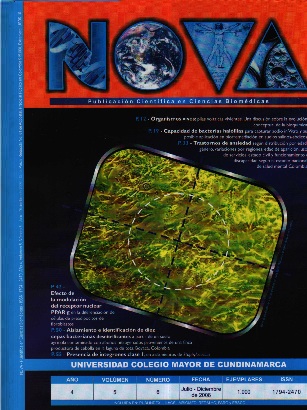This study implemented the technique of colonization in artificial substrates during a period of seven months (November 2004 through May 2005). In the sector of greater urbanization of the wetland, the most representative group of microalgae were the euglenophytas and cyanophytas, with abundance an average of 20300 of indv/cm2. In the areas with lower anthropic intervention the diatoms were predominant, with an abundance average of 1774 ind/cm2. The heterogenity in the system is considerably high due to the trophic conditions and physical factors that affect the system. The results showed space-time differences in terms of composition and abundance. The contribution and succession of the groups of microalgae during the stages of colonization were considerably different for each one of the stations. The diversity, composition and abundance of periphytic microalgae indicates the eutrophication process the wetland is currently going through, as well as the state of its waters that are slightly polluted in some areas and highly polluted in other areas.
keywords:
bioindicators, diatomaceous, limnology, microalgae, pollution, wetland.









